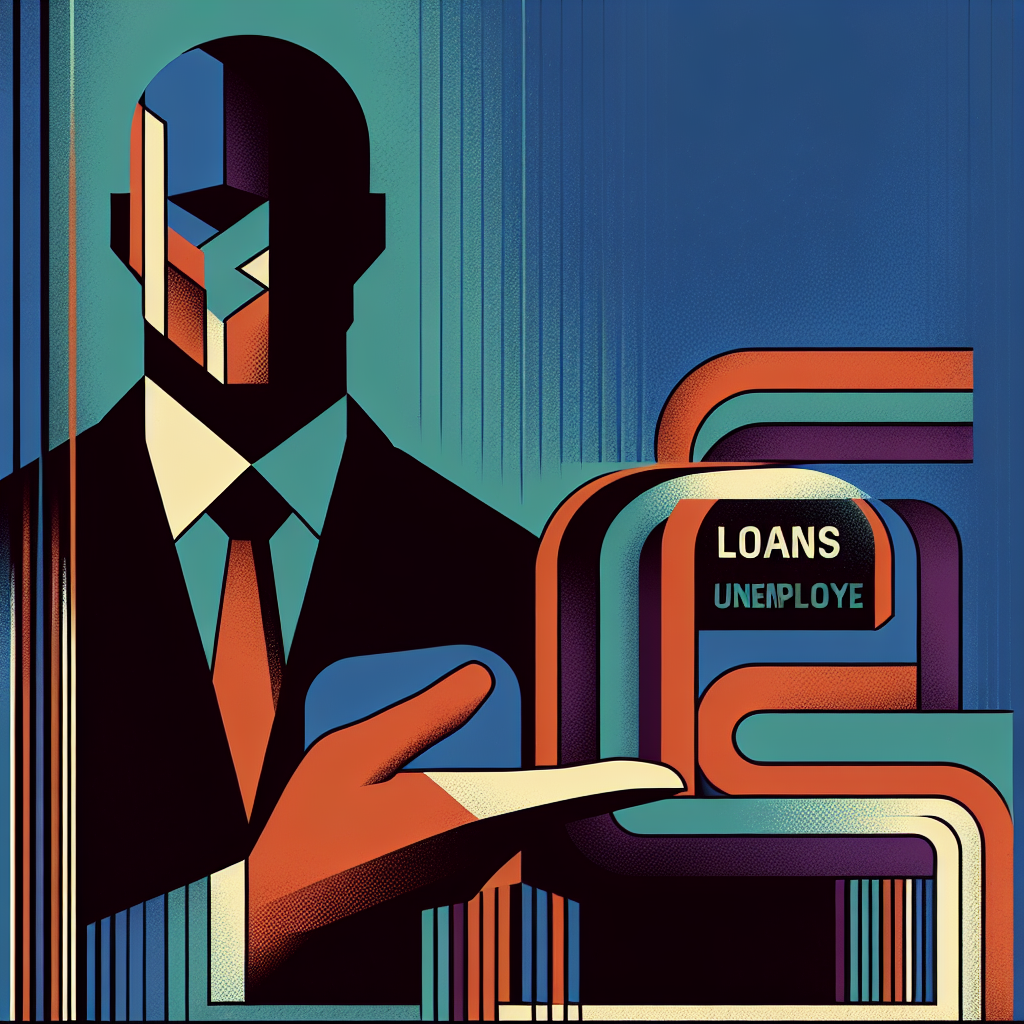Hardship Loans For Unemployed

“Bridge Your Financial Gap with Hardship Loans for the Unemployed”
Hardship Loans For Unemployed individuals are financial assistance options designed to provide temporary relief to those who have lost their jobs and are facing financial difficulties. These loans aim to help cover essential expenses such as rent, utilities, medical bills, and food during periods of unemployment. They are typically offered with more lenient eligibility criteria and repayment terms than standard loans, recognizing the borrower’s limited income sources. However, because these loans still need to be repaid, it is crucial for borrowers to consider their ability to repay the loan once they regain employment or secure an alternative income source.
Facing financial challenges due to unemployment? Secure the support you need with a hardship loan. Click here to explore your options and apply today: Hardship Loans for Unemployed. Act now to regain financial stability!
Understanding Hardship Loans For Unemployed: Eligibility and Application Process
Title: Hardship Loans For Unemployed
In the realm of financial assistance, hardship loans for the unemployed emerge as a beacon of hope for individuals facing the daunting challenge of joblessness. These loans are designed to provide temporary relief to those who have found themselves without a steady income due to various circumstances such as layoffs, company downsizing, or health issues. Understanding the eligibility criteria and the application process for these loans is crucial for those in need, as it can significantly alleviate the stress associated with financial instability.
Firstly, it is important to recognize that hardship loans are not a one-size-fits-all solution. They are tailored to address the specific needs of the unemployed, taking into account the lack of regular income. To be eligible for such a loan, applicants typically must demonstrate that they are actively seeking employment or are unable to work due to disability or other valid reasons. Lenders may require proof of previous employment, evidence of job search efforts, or medical documentation to substantiate the claim of hardship.
Moreover, credit history plays a significant role in the eligibility for a hardship loan. While some lenders may be willing to overlook a less-than-stellar credit score in light of the applicant’s current situation, others may not be as lenient. It is essential for potential borrowers to be aware of their credit standing and seek out lenders who are sympathetic to their plight and willing to consider other factors beyond credit scores.
Transitioning to the application process, it is designed to be as streamlined as possible to expedite the provision of funds to those in dire need. Typically, the process begins with an initial inquiry, either online or in person, where the applicant provides basic personal and financial information. This step is followed by a more detailed assessment, where the lender evaluates the applicant’s financial history, current needs, and repayment capacity.
Documentation is a critical component of the application process. Applicants must be prepared to furnish documents such as identification, proof of residence, bank statements, and any other paperwork that the lender deems necessary to assess the applicant’s financial situation. It is advisable for individuals to have these documents readily available to avoid delays in the loan approval process.
Once the application is submitted, the review process commences. During this phase, lenders scrutinize the provided information to determine the risk associated with lending to the applicant. The duration of this process can vary depending on the lender and the complexity of the applicant’s financial situation. However, given the nature of hardship loans, lenders often strive to make a decision promptly to provide timely assistance.
Upon approval, the loan terms are presented to the applicant, including the interest rate, repayment schedule, and any additional fees. It is imperative for borrowers to thoroughly review these terms and ensure they understand their obligations. A clear comprehension of the loan agreement is essential to avoid any future misunderstandings or financial complications.
In conclusion, hardship loans for the unemployed serve as a vital resource for those navigating the turbulent waters of unemployment. Eligibility hinges on an individual’s employment status, efforts to secure new employment, and overall financial health. The application process, while rigorous, is designed to be accessible and efficient. By arming themselves with knowledge and preparing the necessary documentation, individuals can increase their chances of obtaining the financial support they need during these challenging times.
Top 5 Hardship Loans For Unemployed Individuals: Features and Benefits

Title: Hardship Loans For Unemployed
In the face of unemployment, financial strain can quickly become overwhelming. Fortunately, hardship loans emerge as a beacon of hope, offering a financial lifeline to those in need. These loans are specifically designed to assist individuals who have lost their jobs and are struggling to meet their daily expenses. This article will explore the top five Hardship Loans For Unemployed individuals, delving into their features and benefits to provide a comprehensive understanding of the options available.
Firstly, it’s essential to recognize that hardship loans for the unemployed are typically characterized by more lenient eligibility criteria compared to traditional loans. This is because lenders understand that applicants may not have a steady income to show. As a result, these loans often have lower interest rates and flexible repayment terms, which can be a significant relief for those who are already under financial stress.
One of the most accessible options for unemployed individuals is a secured loan. This type of loan requires borrowers to offer collateral, such as a vehicle or property, which can be seized if the loan is not repaid. The primary benefit of secured loans is their lower interest rates, as the collateral reduces the lender’s risk. Additionally, the loan amounts can be substantial, depending on the value of the collateral, which can be particularly helpful for covering larger expenses.
Another option is an unsecured personal loan. Unlike secured loans, these do not require collateral, making them a viable option for those who do not own significant assets. Unsecured personal loans for the unemployed often come with higher interest rates due to the increased risk to the lender. However, they also offer the advantage of a quick application process and fast disbursement of funds, which can be crucial in times of urgent financial need.
Peer-to-peer lending platforms have also gained popularity as a source of hardship loans. These platforms connect borrowers directly with individual investors, bypassing traditional financial institutions. The benefits of peer-to-peer loans include competitive interest rates and flexible terms, as well as the possibility of negotiating directly with lenders. Moreover, these platforms often employ alternative criteria for assessing creditworthiness, which can be beneficial for those with limited employment history.
Government and nonprofit programs provide another avenue for hardship loans. These loans are often geared towards unemployed individuals and come with very favorable terms, such as low or no interest rates and deferred payments. The primary benefit of these programs is that they are designed with the borrower’s financial hardship in mind, offering not just financial support but also additional resources such as job placement services and financial counseling.
Lastly, payday alternative loans (PALs) offered by credit unions are a responsible alternative to traditional payday loans. PALs have much lower interest rates and fees than payday loans, and they offer a repayment period that is more manageable. To access these loans, borrowers typically need to be members of the credit union, which can be a minor hurdle compared to the potential benefits.
In conclusion, while unemployment can present significant financial challenges, hardship loans offer a viable solution to bridge the gap until stable employment is found. From secured and unsecured personal loans to peer-to-peer lending, government programs, and payday alternative loans, there are several options available, each with its own set of features and benefits. It is crucial for individuals to carefully consider their financial situation and choose a loan that best suits their needs, ensuring they can manage the repayments and ultimately regain their financial footing.
Managing Finances with Hardship Loans For Unemployed: Strategies and Tips
Hardship loans for the unemployed serve as a financial lifeline during periods of economic distress. These loans are designed to provide temporary relief for individuals who have lost their jobs and are struggling to meet their basic financial obligations. As the name suggests, hardship loans are not standard loans; they are typically offered with more lenient terms and conditions to accommodate the borrower’s challenging situation. However, managing finances with such loans requires careful consideration and strategic planning to ensure that the relief provided does not lead to further financial strain down the line.
Firstly, it is essential to understand the nature of hardship loans. Unlike traditional loans, which are based on the borrower’s ability to repay through steady income, hardship loans often consider alternative forms of collateral or assurances. Lenders may require proof of active job search or participation in unemployment benefits programs to extend these loans. The interest rates may be lower, and repayment schedules more flexible, but this does not negate the fact that the borrowed amount must eventually be repaid.
When considering a hardship loan, it is crucial to evaluate the immediate need for funds against the long-term implications of taking on debt. Borrowers should meticulously assess their current expenses and eliminate any non-essential spending. This financial triage ensures that the loan is used for vital needs, such as housing, utilities, and groceries, rather than discretionary spending that can be deferred until the borrower’s financial situation improves.
Moreover, it is advisable to explore all available options before settling on a hardship loan. Government assistance programs, community resources, and family support can provide alternative means of financial support without the burden of interest and the obligation of repayment. If a hardship loan remains the most viable option, borrowers should shop around for the best terms and be fully aware of any fees, penalties, or clauses that could complicate their financial recovery.
Once a hardship loan is secured, managing the funds responsibly is paramount. Borrowers should create a budget that prioritizes essential expenses and allocates a portion of any incoming funds, such as unemployment benefits or part-time earnings, towards loan repayment. This proactive approach to financial management helps to minimize the loan balance and reduce the amount of interest accrued over time.
Communication with the lender is also a key aspect of managing a hardship loan. If the borrower’s financial situation changes—for better or worse—it is important to inform the lender promptly. Many lenders are willing to work with borrowers to adjust repayment terms if necessary, especially if they are kept informed of the borrower’s circumstances. This open line of communication can prevent defaults, late fees, and damage to the borrower’s credit score.
In conclusion, while hardship loans for the unemployed can provide much-needed financial support during tough times, they must be approached with caution and foresight. By carefully considering the need for such a loan, exploring all available resources, and managing the funds and repayment responsibly, borrowers can navigate through their period of unemployment without exacerbating their financial difficulties. With strategic planning and disciplined budgeting, individuals can utilize hardship loans as a tool to bridge the gap between unemployment and the return to financial stability.
Q&A
1. What are Hardship Loans For Unemployed?
Hardship Loans For Unemployed are financial assistance options designed to provide temporary relief to individuals who have lost their jobs and are facing financial difficulties. These loans can help cover essential expenses such as rent, utilities, and food while the borrower is looking for new employment.
2. How can someone qualify for a hardship loan if they are unemployed?
Qualification criteria for hardship loans vary by lender, but typically, applicants must provide proof of unemployment, demonstrate financial hardship, and have a plan for how they will repay the loan. Some lenders may also require a credit check, although there are options available for those with poor credit. Additionally, some programs may require the borrower to participate in financial counseling or job training programs.
3. What are the potential risks of taking out a hardship loan while unemployed?
The potential risks include high-interest rates and fees, which can increase the total amount to be repaid. There is also the risk of falling into debt if the borrower is unable to secure employment and repay the loan on time. Defaulting on the loan can lead to negative impacts on the borrower’s credit score and potential legal action from the lender. It’s important for borrowers to carefully consider their ability to repay the loan before taking one out.Conclusion: Hardship loans for the unemployed are financial aids designed to assist individuals who have lost their jobs and are facing financial difficulties. These loans can provide temporary relief to cover essential expenses such as housing, food, and medical bills. However, they typically come with high-interest rates and require careful consideration of the borrower’s ability to repay the loan to avoid further financial distress. It is important for those seeking hardship loans to explore all available options, including government programs and community assistance, and to fully understand the terms and conditions before committing to a loan.



